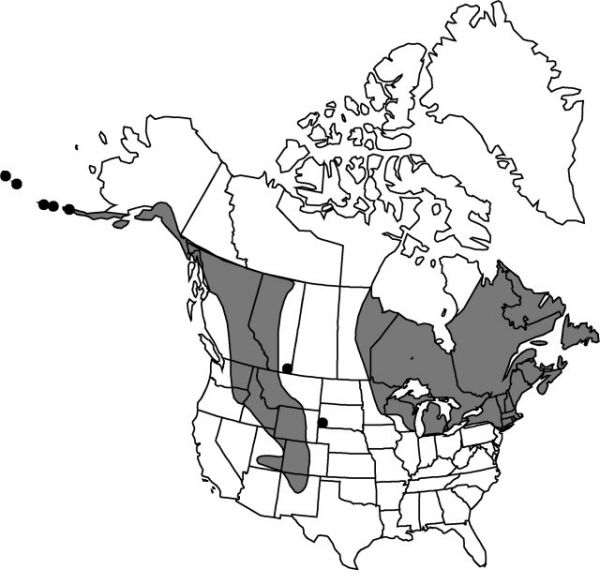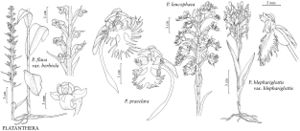Difference between revisions of "Platanthera huronensis"
Gen. Sp. Orchid. Pl., 288. 1835.
imported>Volume Importer |
imported>Volume Importer |
||
| Line 82: | Line 82: | ||
|publication year=1835 | |publication year=1835 | ||
|special status=Illustrated;Endemic | |special status=Illustrated;Endemic | ||
| − | |source xml=https:// | + | |source xml=https://bitbucket.org/aafc-mbb/fna-data-curation/src/2e0870ddd59836b60bcf96646a41e87ea5a5943a/coarse_grained_fna_xml/V26/V26_1137.xml |
|subfamily=Orchidaceae subfam. Orchidoideae | |subfamily=Orchidaceae subfam. Orchidoideae | ||
|tribe=Orchidaceae tribe Orchideae | |tribe=Orchidaceae tribe Orchideae | ||
Latest revision as of 21:11, 5 November 2020
Plants 10–100 cm or more. Leaves few–several, ascending, scattered along stem, gradually reduced to bracts distally; blade oblong to linear-lanceolate, 5–30 × 0.6–7 cm. Spikes very lax to very dense. Flowers resupinate, not showy but sometimes conspicuous, whitish green; corolla often whiter than calyx; lateral sepals spreading to slightly reflexed; petals ovate- to lance-falcate, margins entire; lip descending or apex adhering to dorsal sepal and petal apices, lanceolate to nearly linear, without basal thickening, 5–12 × 2–4 mm, base slightly to rather markedly rounded-dilated, margins entire; spur slenderly cylindric to clavate, 4–12 mm, apex usually slenderly tapered; rostellum lobes divergent, directed downward, very small, obscure, rounded; pollinaria straight; pollinia remaining enclosed in anther sacs; viscidia oblong; ovary rather slender to stout, mostly 6–15 mm. 2n = 84.
Phenology: Flowering Jun–Aug.
Habitat: Wet meadows, tundra, marshes, fens, stream banks, shores, ditches, seeping slopes, roadsides
Elevation: 0–3300 m
Distribution

Alta., B.C., Man., N.B., Nfld. and Labr., N.S., Ont., P.E.I., Que., Yukon, Alaska, Colo., Conn., Idaho, Maine, Mass., Mich., Minn., Mont., N.H., N.J., N.Mex., N.Y., Oreg., R.I., S.Dak., Utah, Vt., Wash., Wis., Wyo.
Discussion
Northwestern plants commonly treated as Platanthera hyperborea var. viridiflora (Chamisso) Kitamura (note Kitamura’s priority over Luer) are P. huronensis; Chamisso’s name furthermore is synonymous with P. stricta. Aleutian and coastal Alaskan plants are often short, stout, and broad-leaved, and they have incorrectly been referred to 9. P. convallariifolia.
Platanthera huronensis as here delimited does not auto-pollinate in the manner of P. aquilonis. Occasional plants and populations that may be referable to P. huronensis, however, exhibit the movement of pollinia typical of P. aquilonis. These plants might reflect infraspecific variation within an allotetraploid species, result from hybridization, or constitute a distinct taxon. The relationship of some of these plants to P. hyperborea needs study.
Platanthera huronensis is typically intensely fragrant with the sweet, pungent scent of some related species.
Platanthera huronensis is known to hybridize with P. dilatata; it may hybridize with other species as well. Although hybrids of P. dilatata and P. aquilonis may occur, the name traditionally used for them, P. ×media (Rydberg) Luer is a synonym of P. huronensis. See notes under 10. P. aquilonis and 8. P. hyperborea.
Selected References
None.
